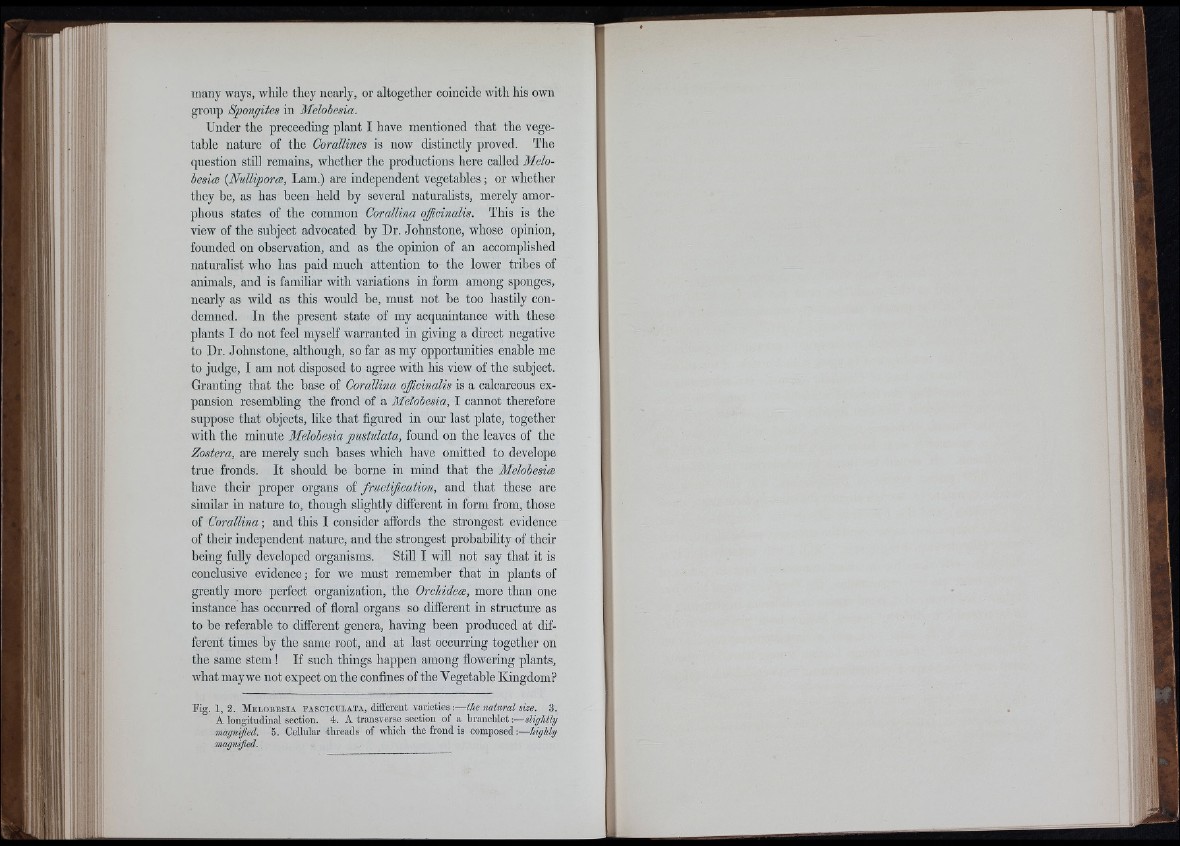
: ' , i :j
i I)
i I
many ways, while they nearly, or altogether coincide with his own
group Sponyites in Melobesia.
Under the proceeding plant I have mentioned that the vegetable
nature of the Corallines is now distinctly proved. The
question still remains, whether the productions here called Melo-
besim {Nulliporcs, Lam.) are independent vegetables; or whether
they be, as has been held by several naturalists, merely amorphous
states of the common Corallina officinalis. This is the
view of the subject advocated by Dr. Johnstone, whose opinion,
founded on observation, and as the opinion of an accomplished
naturalist who has paid much attention to the lower tribes of
animals, and is familiar with variations in form among sponges,
nearly as wild as this would be, must not be too hastily condemned.
In the present state of my acquaintance with these
plants I do not feel myself warranted in giving a direct negative
to Dr. Johnstone, although, so far as my opportunities enable me
to judge, I am not disposed to agree with his view of the subject.
Granting that the base of Corallina officinalis is a calcareous expansion
resembling the frond of a Melobesia, I cannot therefore
suppose that objects, like that figured in our last plate, together
with the minute Melobesia pnstulata, found on the leaves of the
Zostera, are merely such bases which have omitted to develope
true fronds. It should be borne in mind that the Melobesia
have their proper organs of fructification, and that these are
similar in nature to, though slightly different in form from, those
of Corallina; and this I consider affords the strongest evidence
of tlieir independent nature, and the strongest probability of their
being fully developed organisms. StiU I will not say that it is
conclusive evidence; for we must remember that in plants of
greatly more perfect organization, the Orchidea, more than one
instance has occurred of floral organs so different in structure as
to be referable to different genera, having been produced at different
times by the same root, and at last occurring together on
the same stem ! If such things happen among flowering plants,
what may we not expect on the confines of the Vegetable Kingdom?
Fig. 1, 2. M e l o b e s ia e a s c ic u l a t a , different varieties :— the natural size.
A longitudinal section. 4. A transverse section of a branchlet
5. Cellular tlneads of which the frond is composed:—,
I